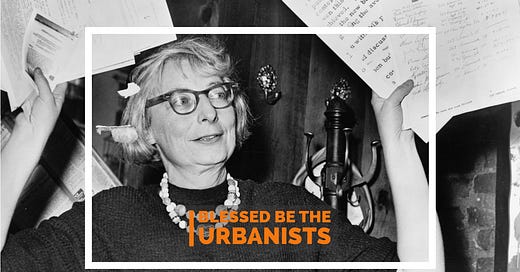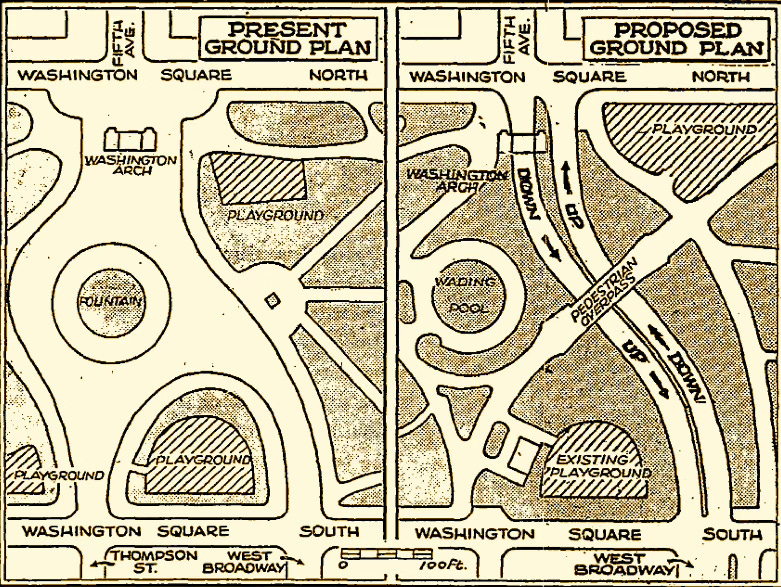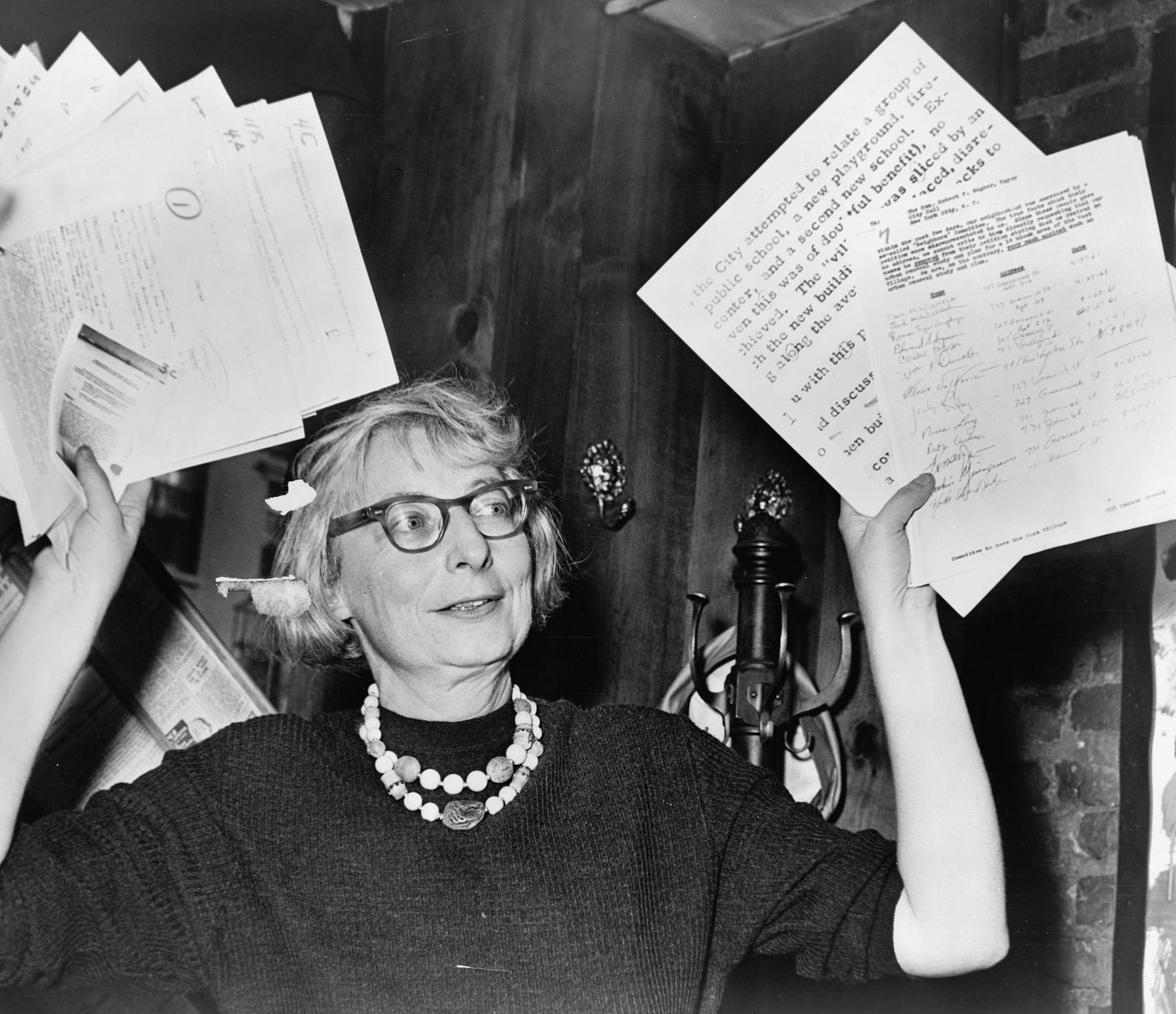“Today everyone who values cities is disturbed by automobiles.” – Jane Jacobs
A slight change to proceedings this week as I pay homage to one of the greatest urbanists. Enjoy!
Name: Jane Jacobs
Age: Jacobs died in 2006 at the age of 89.
Appearance: Instantly recognisable by her jaw-length bob and thick-rimmed black glasses.
Is that why you wear Cubitts Woolf spectacles? What do you think?
Was she always an urbanist? No, she started out with a series of writing jobs and ended up working for Architectural Forum.
So how come people know her as an urbanist? Because she crossed paths with her nemesis, the immensely powerful Robert Moses, in 1955 and had no option but to become a protector of cities. Keep in mind that Moses had the banks, labour unions, contractors, insurance firms and various other forces behind him. This was something of a David and Goliath situation.
What was the problem? Moses wanted to build the snappily titled Lower Manhattan Expressway, a ten-lane highway, through SoHo and Little Italy.
That sounds quite destructive. It would have been. Not only would it have severed communities, dislodged 2,200 families, destroyed 480 livelihoods, bulldozed countless buildings of heritage and architectural significance and created acres of dead frontage, it would have culminated in the introduction of a four-lane road through the centre of Washington Square Park:
Eek! What happened? Jacobs was a local resident at the time and received a flyer from the Committee to Save Washington Square Park explaining the plans to extend 5th Avenue through the park to Washington Square South. Jacobs leapt into action rallying the media and community – including Eleanor Roosevelt, no less! – to make a stand against the plans.
Blimey. Friends in high places! Did Jacobs ever meet Moses? Only once. As the fight against the expressway went on, she told James Howard Kunstler in an interview for Metropolitan Magazine:
“I saw him only once, at a hearing about the road through Washington Square, which was to be an entrance ramp to the Lower Manhattan Expressway. He was there briefly to speak his piece. But nobody was told that at the time.
None of us had spoken yet because they always had the officials speak first and then they would go away and they wouldn’t listen to the people. Anyway, he stood up there gripping the railing, and he was furious at the effrontery of this, and I guess he could already see that his plan was in danger. Because he was saying: ‘There is nobody against this – NOBODY, NOBODY, NOBODY but a bunch of … a bunch of MOTHERS!’ And then he stomped out.”
Nice fella. Indeed.
Then what happened? Jacobs wrote an article for Fortune magazine in 1958 articulating a vision of the “teeming city” which ultimately led to the commission of… *drumroll, please!*… The Death and Life of Great American Cities.
Ah! At last, a mention of her magnum opus! Yes and by the time she’d finished it, she wasn’t only campaigning vigorously against the expressway, she was also fighting to save a large swathe of Greenwich Village that had been classified as “blighted” to open up the land to redevelopment by Moses and his goons in high places. Here she is at a 1961 press conference, acting as co-chair of the Committee to Save the West Village:
Yowza! I know, but that’s not all. She ended up jailed for a night on charge including criminal mischief when she disrupted a public meeting regarding the expressway by storming the stage with other protestors. In the chaos the stenographer’s record of the meeting was destroyed.
Criminal Mischief. I love that! What was the outcome of all the protests? Ultimately the expressway project fizzled out and was cancelled.
Thank heck! Quite.
So, what are some of the highlights of Death and Life? Well, the opening sentence sets the tone perfectly: “This book is an attack on current city planning and rebuilding.”
Oof, don’t hold back, Jane! Absolutely. But she does go on to identify four Conditions for City Diversity.
Cool! Give me the “Cliff’s Notes” version... Ok. First is the need for mixed primary uses. She says:
“The district, and indeed as many of its internal parts as possible, must serve more than one primary function; preferably more than two. These must ensure the presence of people who go outdoors on different schedules and are in the place for different purposes, but who are able to use many facilities in common.”
Stores, streets and parks need users to be successful. You have to have sufficient people – residents and workers – out and about during the day and into the evening and at weekends. Similarly, districts should not be confined to one function. Mix it up! And keep old buildings – see below. Include various attractors – you could have a bit of cultural animation if the mood takes you so people go back to a place just to see what’s going on. Just have different people sharing streets. This creates her famous ‘eyes on the street’ – the street becomes self-policing.
In other words combine residential, workplaces and shops together. Keep the city messy.
Messy cities, I like that. Don’t zone out the interesting bits! You got it. Second is the need for small blocks. Jane says:
“Most blocks must be short; that is, the streets and opportunities to turn corners must be frequent.”
Long blocks discourage the exploration of adjacent streets because you can’t turn corners – she spoke a lot about the importance of corners and having active uses in these locations that become magnets of activity. Long blocks create self-isolating streets, which have a negative impact on the economy. Instead, you need a fluidity of uses and the mixing of paths and routes to tie city neighbourhoods into ‘pools’ of city use. Frequent junctions help generate diversity.
As a flâneur, walking in a city that’s easy to explore is one of life’s great pleasures! I couldn’t agree more. Who wouldn’t like to linger at a corner pavement café in Paris?
I would! Time for a Pernod! Well, why not? But before you order it, the next condition is the need for aged buildings. To satisfy this condition:
“The district must mingle buildings that vary in age and condition, including a good proportion of old ones.”
There is a desperate need for “plain, ordinary, low-value old buildings, including some run-down buildings.” New buildings have high overheads and therefore occupiers must turn high profits or be subsidised. On the other end of the scale, an area with only old buildings has failed, because it hasn’t attracted new investment or opportunities. You need a mix of young and old buildings.
In successful districts, old buildings “filter up”. They provide incubator space for start-ups. And for the love of malbec avoid homogenous neighbourhoods as these struggle with change.
Variety is the spice of life! Exactly.
That all makes sense. The older buildings are often the most interesting. And sometimes listed. Historic England take a very dim view when those are in line for demolition.
What’s the final condition? Ah, it’s the need for concentration. Here:
“The District must have a sufficiently dense concentration of people for whatever purpose they may be there. This includes people there because of residence.”
Concentrated populations can support more convenience and cultural enterprises than thinly spread ones. Jacobs called for high densities of people and residences and noted the slums are often in low-density areas. However, high density can also ‘fail’ if diversity and variety is thwarted.
She made the point not to confuse high density (No units / acre) with overcrowding (No people / room). Slum clearance often lowers density which can result in overcrowding. But high density still needs a variety of building types of different ages to accommodate it. Jacobs felt that 200 units per acre is about right. And short blocks support higher plot coverage by creating space between buildings as well as contributing to diversity.
Wow. A lot to think about there. I know. And that’s just a summary of less than one quarter of the book!
Any closing thoughts? Jacobs understood that cities are complex and messy – the things that make them tick are all occurring simultaneously and in subtly interconnected ways. Jacobs saw cities as a never-ending process, constantly changing and evolving. Our efforts to simplify and tidy cities are actually destroying them.
Do say: Shall we stop at this pavement café and raise a glass to Jane Jacobs?
Don’t say: Come on, what this place needs is a four-lane highway running through it!
Question: How have you been influenced by Jane’s work?
#janejacobs #urbanist #urbanism #eyesonthestreet






